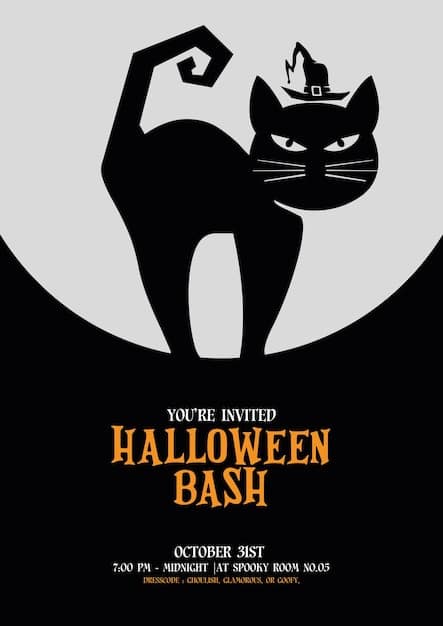The Influence of Cult Films: Faster, Pussycat! and Action Cinema

The Influence of Cult Films: How ‘Faster, Pussycat! Kill! Kill!’ Shaped Action Cinema is undeniable, particularly in its raw, independent spirit and its unapologetic portrayal of powerful women. This film broke conventions and paved the way for future action films.
The allure of cult films lies in their ability to defy conventions and resonate with niche audiences, often sparking trends and influencing mainstream cinema in unexpected ways. Among these cinematic gems, Russ Meyer’s 1965 film, “Faster, Pussycat! Kill! Kill!” stands out as a bold and provocative work that left an indelible mark on the action genre. But what is The Influence of Cult Films: How ‘Faster, Pussycat! Kill! Kill!’ Shaped Action Cinema?
This low-budget exploitation film, with its hyper-kinetic energy and unapologetic portrayal of female aggression, challenged the norms of its time and paved the way for a new breed of action heroines. It’s the celebration of violence, the embrace of low-budget thrills, and the sheer audacity of its vision have continued to inspire filmmakers and captivate audiences for decades. Let’s explore how the film impacted society.
Exploring the Cult Status of ‘Faster, Pussycat! Kill! Kill!’
At its core, “Faster, Pussycat! Kill! Kill!” is a film that revels in its own outrageousness. But how did this film achieve cult status, and what elements contribute to its enduring appeal? Its unique blend of action, exploitation, and dark humor made it a standout film of its time and has become a cult classic for years after its release.
Provocative Themes and Exploitation Elements
The film’s provocative themes, including female empowerment and unchecked aggression, were groundbreaking for the mid-1960s. Meyer’s exploitation approach, with its emphasis on sex and violence, pushed the boundaries of what was acceptable on screen, contributing to its notoriety and cult following. This approach paved the way for a new wave of independent filmmakers.
Low-Budget Production with a Unique Style
Produced on a shoestring budget, “Faster, Pussycat! Kill! Kill!” overcame its limitations with creative camerawork, dynamic editing, and a distinctive visual style. These elements, combined with a memorable soundtrack, created a film that was both gritty and stylish, appealing to a generation of film enthusiasts. Every element of the movie, from the soundtrack to the setting, created a unique aesthetic.
- Independent Spirit: The film’s low-budget origins and DIY approach resonated with independent filmmakers and helped establish the “exploitation” genre.
- Female Empowerment: The film features strong, independent female characters who challenge traditional gender roles and defy societal expectations.
- Controversial Themes: “Faster, Pussycat! Kill! Kill!” tackles themes of violence, sexuality, and power dynamics in a provocative and controversial manner.
- Visual Style: The film’s distinctive visual style, including its use of fast cuts, dynamic camera angles, and stylized violence, created a unique and memorable cinematic experience.
The enduring cult status of “Faster, Pussycat! Kill! Kill!” can be attributed to its provocative themes, exploitation elements, low-budget production value, unique style, and historical significance. The film’s blend of action, exploitation, and dark humor cemented its place in cinema history, inspiring filmmakers and captivating audiences for decades.
The Direct Influence of ‘Faster, Pussycat!’ on Tarantino and Rodriguez
Quentin Tarantino and Robert Rodriguez, two of the most influential filmmakers of the late 20th and early 21st centuries, have openly acknowledged the profound impact of “Faster, Pussycat! Kill! Kill!” on their work. But what makes their appreciation for the film so significant? Their work clearly shows aspects of the film that inspired them.
Tarantino’s Homages and References
Tarantino, known for his encyclopedic knowledge of cinema, has frequently paid homage to “Faster, Pussycat! Kill! Kill!” in his films. From the strong female characters in “Pulp Fiction” and “Kill Bill” to the stylized violence and retro aesthetic, Tarantino’s work echoes Meyer’s groundbreaking film. These references can certainly be seen in the violence and style.
Rodriguez’s Genre-Bending Sensibilities
Rodriguez, with his genre-bending sensibilities and love of exploitation cinema, has also cited “Faster, Pussycat! Kill! Kill!” as a major influence. His films, such as “Grindhouse” and “Machete,” share Meyer’s penchant for over-the-top action, dark humor, and unconventional storytelling. Just like Meyer, Rodriguez also embraces the absurd and outrageous.
- Strong Female Leads: Both Tarantino and Rodriguez have created iconic female characters, drawing inspiration from Varla and her cohorts in “Faster, Pussycat! Kill! Kill!”.
- Stylized Violence: The over-the-top violence and exaggerated action sequences in their films owe a debt to Meyer’s pioneering work.
- Retro Aesthetic: Tarantino and Rodriguez often incorporate retro elements and a vintage sensibility into their films, reflecting the influence of “Faster, Pussycat! Kill! Kill!”.
- Independent Spirit: Both filmmakers embrace an independent spirit and a DIY approach to filmmaking, echoing the low-budget origins of Meyer’s cult classic.
The direct influence of “Faster, Pussycat! Kill! Kill!” on Quentin Tarantino and Robert Rodriguez shaped a lot of the films we see today. Tarantino’s homages and Rodriguez’s genre-bending sensibilities both reflect Meyer’s impact on their work, ensuring that “Faster, Pussycat! Kill! Kill!” continues to inspire new generations of filmmakers and audiences.
The Broader Impact on Action Cinema and Beyond
The influence of “Faster, Pussycat! Kill! Kill!” extends beyond the works of Tarantino and Rodriguez. The film’s impact on action cinema and popular culture is far-reaching, shaping the representation of women, the aesthetics of action films, and the very definition of cult cinema. How did the film impact subsequent films released?
Redefining Female Roles in Action Films
Before “Faster, Pussycat! Kill! Kill!”, female characters in action films were often relegated to damsels in distress or supporting roles. Meyer’s film shattered these stereotypes, presenting women as powerful, independent, and sexually assertive characters who could hold their own in a male-dominated world. The film helped to redefine what it meant to be a female character in cinema.
Shaping the Aesthetics of Action Films
The film’s fast cuts, dynamic camera angles, and stylized violence have become hallmarks of action cinema. Meyer’s pioneering techniques influenced countless action films that followed, shaping the look and feel of the genre for decades to come. His techniques were revolutionary for the time, even inspiring many future filmmakers.
Elevating Cult Cinema
“Faster, Pussycat! Kill! Kill!” helped elevate cult cinema from a niche subculture to a recognized and celebrated form of filmmaking. Its success paved the way for other independent and exploitation films to find an audience, and it helped legitimize the study and appreciation of cult films. The elevation of the genre would not have been possible without it.
- Action Heroines: “Faster, Pussycat! Kill! Kill!” paved the way for a new breed of action heroines, including characters like Sarah Connor in “Terminator 2” and Beatrix Kiddo in “Kill Bill”.
- Visual Style: The film’s dynamic visual style, including its use of fast cuts and stylized violence, has been emulated in countless action films and music videos.
- Independent Filmmaking: “Faster, Pussycat! Kill! Kill!” inspired independent filmmakers to push boundaries and create original, unconventional works.
- Study of Cult Cinema: Its enduring popularity helped legitimize the study and appreciation of cult films in academic and cinematic circles.
The legacy of “Faster, Pussycat! Kill! Kill!” is evident in its impact on action cinema, gender representation, film aesthetics, and cult cinema studies. Its influence can still be seen today through the way the film has affected society over the years since its release.
Analyzing the Film’s Enduring Themes and Messages
Despite its exploitation roots and over-the-top style, “Faster, Pussycat! Kill! Kill!” explores several themes and messages that continue to resonate with audiences today. One of the most important elements of its story is its timelessness and how the messages are more relevant than ever. The film’s themes and messages are more important than ever.
Female Empowerment and Agency
The film’s portrayal of women as strong, independent, and sexually assertive challenged traditional gender roles and celebrated female agency. Varla and her cohorts defied societal expectations, taking control of their own destinies and refusing to be victims. The celebration of female independence is not something that was often seen in films at the time.
Critique of Masculinity and Power
While celebrating female empowerment, “Faster, Pussycat! Kill! Kill!” also offers a critique of masculinity and power. The male characters in the film are often depicted as weak, inept, or outright villains, highlighting the toxic effects of unchecked male privilege. The lack of the toxic male lead is something that allows the strong female characters to stand out even more.
Exploration of Violence and its Consequences
The film’s graphic violence, while often stylized, also serves as a commentary on the destructive nature of violence and its consequences. The characters’ actions have real-world repercussions, and the film does not shy away from depicting the brutality and tragedy that result from their choices. The impact of violence and its consequences are something the film takes very seriously.
- Independence: The film celebrates the importance of independence and self-reliance, urging viewers to take control of their own lives and destinies.
- Challenging Norms: “Faster, Pussycat! Kill! Kill!” challenges societal norms and conventions, encouraging viewers to question authority and think for themselves.
- Consequences: The film highlights the importance of considering the consequences of one’s actions, urging viewers to act responsibly and ethically.
- Breaking Stereotypes: It breaks down stereotypes and prejudices, promoting inclusivity and celebrating diversity.
The enduring value of “Faster, Pussycat! Kill! Kill!” lies in its timeless themes and messages. Its exploration of female empowerment, critique of masculinity, and examination of violence continue to resonate with audiences, making it a classic of cult cinema. No matter when the movie is viewed, it speaks to audiences, both old and new.
The Legacy of ‘Faster, Pussycat!’: A Lasting Impact
The influence of “Faster, Pussycat! Kill! Kill!” on action cinema and popular culture is undeniable. Its legacy continues to shape the genre, inspire filmmakers, and captivate audiences worldwide. How enduring is its lasting impact? It has an impact on films, audiences, and society in general.
Recognition and Preservation
The film has been recognized by numerous organizations and institutions for its cultural and historical significance. It has been preserved by the Library of Congress in the National Film Registry, ensuring that future generations can experience its unique blend of action, exploitation, and dark humor. This ensures that people are aware of the impact it has had on culture.
Influence on Contemporary Filmmakers
“Faster, Pussycat! Kill! Kill!” continues to influence contemporary filmmakers, inspiring new techniques and approaches. The film’s innovative visual style, strong female characters, and provocative themes can be seen in many modern action films, ensuring its legacy endures for years to come. The contemporary films of our time are affected by it as well.
Enduring Appeal to Cult Film Enthusiasts
The film retains a dedicated following among cult film enthusiasts worldwide, who appreciate its originality, audacity, and sheer entertainment value. Its screenings often draw large crowds, and its merchandise remains popular, demonstrating its lasting appeal. The lasting appeal of the film has earned it a place amount cult film fans.
- Icon Status: “Faster, Pussycat! Kill! Kill!” has achieved iconic status, becoming a symbol of independent filmmaking, female empowerment, and cult cinema.
- New Audiences: The film continues to find new audiences, captivating viewers with its unique blend of action, humor, and social commentary.
- Historical Relevance: “Faster, Pussycat! Kill! Kill!” remains historically relevant, providing insights into the social and cultural landscape of the 1960s and the evolution of action cinema.
- Film Impact: The film’s widespread impact ensures its place in cinematic history.
The lasting legacy of “Faster, Pussycat! Kill! Kill!” is best seen through its continued recognition and preservation to highlight the The Influence of Cult Films: How ‘Faster, Pussycat! Kill! Kill!’ Shaped Action Cinema. Its impact on action films is still being observed as more contemporary filmmakers take the inspiration and techniques to apply them to films of our time.
| Key Point | Brief Description |
|---|---|
| 🎬 Cult Status | Provocative themes and unique style helped it gain cult status. |
| 🦸♀️ Female Influence | Redefined female roles in action cinema with strong characters. |
| 🎥 Techniques | Shaped action film aesthetics with fast cuts and stylized violence. |
| 🎭 Lasting Legacy | Continues to be recognized and influence contemporary filmmakers. |
Frequently Asked Questions
“Faster, Pussycat! Kill! Kill!” is a 1965 exploitation film directed by Russ Meyer that follows three go-go dancers as they embark on a violent rampage through the California desert. The result shows The Influence of Cult Films: How ‘Faster, Pussycat! Kill! Kill!’ Shaped Action Cinema.
“Faster, Pussycat! Kill! Kill!” was directed by Russ Meyer, an American filmmaker known for his exploitation films featuring voluptuous women and over-the-top action.
Quentin Tarantino and Robert Rodriguez have praised “Faster, Pussycat! Kill! Kill!” for its stylized violence, strong female characters, and independent spirit, influencing their films such as “Kill Bill” and “Grindhouse.” Their contemporary work proves The Influence of Cult Films: How ‘Faster, Pussycat! Kill! Kill!’ Shaped Action Cinema.
“Faster, Pussycat! Kill! Kill!” explores themes of female empowerment, critiques of masculinity, exploitation of violence, and the consequences of ones actions in a harsh society.
Its themes, unique style, impact on future films, recognition, contemporary influence, and entertainment value show us exactly The Influence of Cult Films: How ‘Faster, Pussycat! Kill! Kill!’ Shaped Action Cinema.
Conclusion
In conclusion, “Faster, Pussycat! Kill! Kill!” has left an indelible mark on action cinema and popular culture. From its groundbreaking portrayal of female empowerment to its innovative visual style, the film has shaped the genre and inspired generations of filmmakers. The The Influence of Cult Films: How ‘Faster, Pussycat! Kill! Kill!’ Shaped Action Cinema has been a timeless piece of action cult film.
As we continue to explore and appreciate cult films, it’s essential to recognize how “Faster, Pussycat! Kill! Kill!” has helped to elevate the genre to new heights. Its influence goes beyond just film making and impacts how we view the society that surrounds us.





